What is a Brown soil moisture probe?
Montana soil scientist Paul Brown developed the basic soil penetrometer to estimate moisture stored in the soil. The probe is a 5/8”-diameter steel ball welded to a 3/8” diameter rod, with a T-handle at the opposite end.
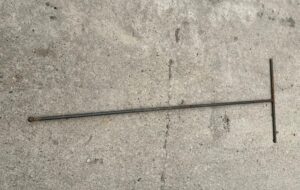
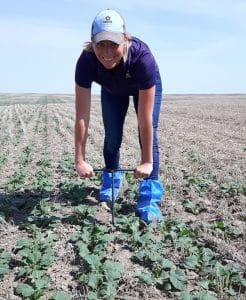
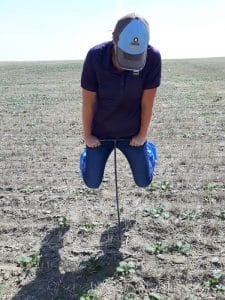
How to use it?
Grasp the “T”, push the 5/8” ball into the soil. Do not turn or twist it. It will only penetrate to the depth of moist soil, stopping when it hits a region of dry soil (or a stone). It will not penetrate dry soil. Sample several locations, especially (but not only) in stoney soils. The probe stops at the dry band regardless of the mass or determination of the pusher.
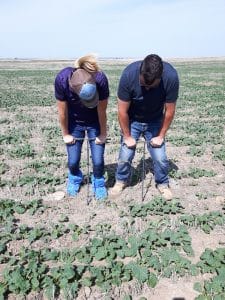
What does it tell you?
Brown developed the tool to determine the depth of moist soil. Knowing the soil type, this depth can indicate the inches of available moisture in the root zone. Growers and agronomists can use this information to estimate yield potential. The following table is from a Manitoba Government fact sheet. Resources from Saskatchewan and Alberta indicate, for loamy sand soil, a ratio closer to 1″ of available moisture per 12″ of probe penetration. A 2003 Saskatchewan report explains how to use moisture probe results for crop planning.
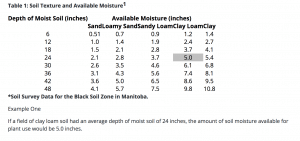
High tech versus low tech. Field weather stations often include soil moisture sensors, which measure soil moisture down to one metre depth, sometimes more. Programs included with the stations can also provide instant yield estimates. Ag meteorology specialists working on the Prairies often use digital hand-held probes. These new tools are quicker and handier, but the Brown probe provides a proven low-tech and lower-cost option.
